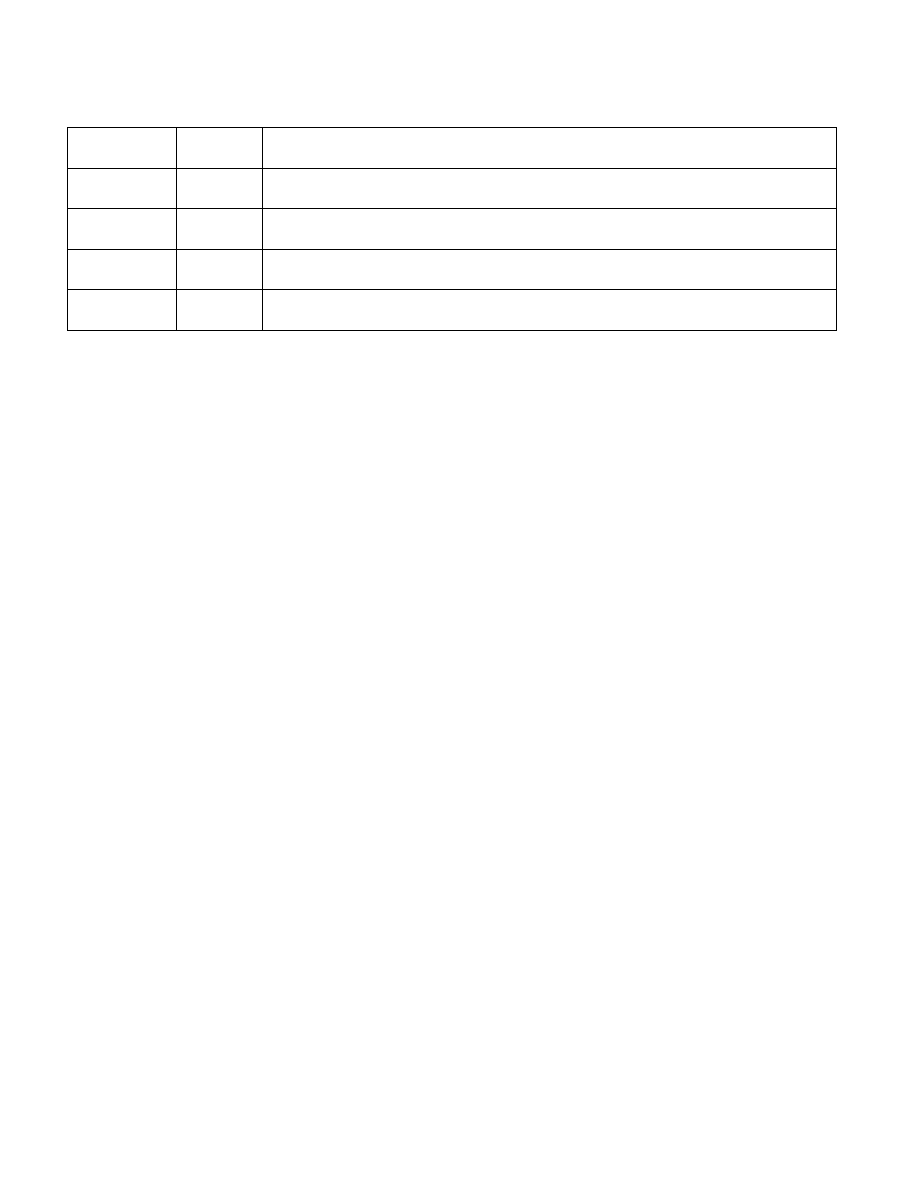
4-18 Vol. 1
DATA TYPES
The round up and round down modes are termed directed rounding and can be used to implement interval arith-
metic. Interval arithmetic is used to determine upper and lower bounds for the true result of a multistep computa-
tion, when the intermediate results of the computation are subject to rounding.
The round toward zero mode (sometimes called the “chop” mode) is commonly used when performing integer
arithmetic with the x87 FPU.
The rounded result is called the inexact result. When the processor produces an inexact result, the floating-point
precision (inexact) flag (PE) is set (see Section 4.9.1.6, “Inexact-Result (Precision) Exception (#P)”).
The rounding modes have no effect on comparison operations, operations that produce exact results, or operations
that produce NaN results.
4.8.4.1
Rounding Control (RC) Fields
In the Intel 64 and IA-32 architectures, the rounding mode is controlled by a 2-bit rounding-control (RC) field
(Table 4-8 shows the encoding of this field). The RC field is implemented in two different locations:
•
x87 FPU control register (bits 10 and 11)
•
The MXCSR register (bits 13 and 14)
Although these two RC fields perform the same function, they control rounding for different execution environ-
ments within the processor. The RC field in the x87 FPU control register controls rounding for computations
performed with the x87 FPU instructions; the RC field in the MXCSR register controls rounding for SIMD floating-
point computations performed with the SSE/SSE2 instructions.
4.8.4.2
Truncation with SSE and SSE2 Conversion Instructions
The following SSE/SSE2 instructions automatically truncate the results of conversions from floating-point values to
integers when the result it inexact: CVTTPD2DQ, CVTTPS2DQ, CVTTPD2PI, CVTTPS2PI, CVTTSD2SI, CVTTSS2SI.
Here, truncation means the round toward zero mode described in Table 4-8.
4.9
OVERVIEW OF FLOATING-POINT EXCEPTIONS
The following section provides an overview of floating-point exceptions and their handling in the IA-32 architecture.
For information specific to the x87 FPU and to the SSE/SSE2/SSE3/SSE4.1 extensions, refer to the following
sections:
•
Section 8.4, “x87 FPU Floating-Point Exception Handling”
•
Section 11.5, “SSE, SSE2, and SSE3 Exceptions”
When operating on floating-point operands, the IA-32 architecture recognizes and detects six classes of exception
conditions:
•
Invalid operation (#I)
Table 4-8. Rounding Modes and Encoding of Rounding Control (RC) Field
Rounding Mode
RC Field
Setting
Description
Round to
nearest (even)
00B
Rounded result is the closest to the infinitely precise result. If two values are equally close, the
result is the even value (that is, the one with the least-significant bit of zero). Default
Round down
(toward −∞)
01B
Rounded result is closest to but no greater than the infinitely precise result.
Round up
(toward +∞)
10B
Rounded result is closest to but no less than the infinitely precise result.
Round toward
zero (Truncate)
11B
Rounded result is closest to but no greater in absolute value than the infinitely precise result.